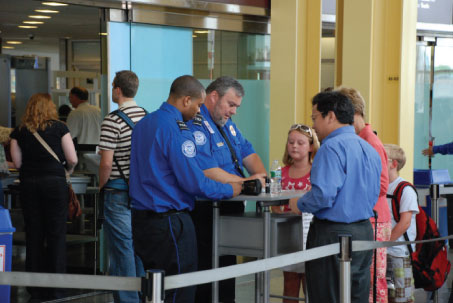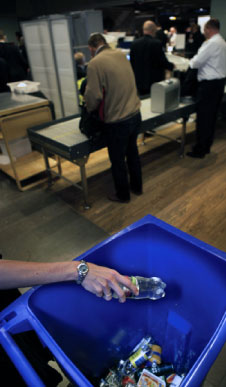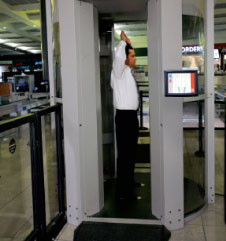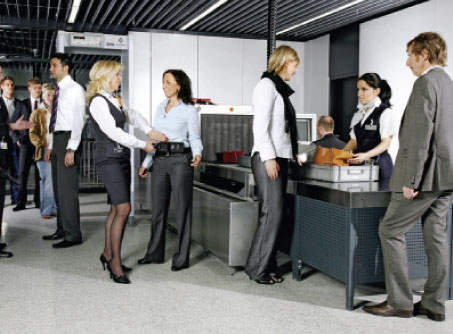
Security now accounts for an average 27% of airport operating costs. Here in Europe, it is mostly airports that have to foot the bill, unlike in the US, where the TSA is funded by the Federal Government.
The post 9/11 security regime of the past decade has essentially redefined people’s perception of air travel and airports in particular, with security being viewed by some as an unnecessary, illogical hassle that comes between them and their flight. On the business side, for the 400 or so European airports represented by ACI EUROPE, security has soared in cost. Before 9/11, security accounted for up to 8% of operating costs at European airports. Today, that figure has ballooned to an average 27% of airport operating costs and 41% of our staff is security-related. Here in Europe, it is mostly airports that have to foot the bill, unlike in the US, where the Transportation Security Administration (TSA) is funded by the Federal Government. As for the media’s treatment of air travel, security is no longer just a story. It is now a saga. Every time a security incident occurs, Day 1’s media coverage is about the event itself, but by Day 3, the press is pondering how the nature of the incident will impact current security regulations and complicate the life of the air passenger even more.
All of this has cast a significant shadow on the passenger experience of the airport and never more so than at peak times of year, such as the summer season and the winter holiday season. Often times in the past decade, some of the biggest difficulties have been in the operational performance of technology in a live airport environment and communicating changes in the rules to passengers.
However, it is overly-simplistic to cast aside airport security as illogical or ineffective, when its greatest triumphs go unreported and uncelebrated, while its flaws are put under increasingly harsh scrutiny and subjected to media polemic.
The fact is that whether we like it or not, airport security is an important and necessary part of the air transport system. The possibility of man-made flight is only a century old and its continued success relies on its reputation as a reliable, safe and secure way of getting from A to B. So what hope is on the horizon for a more hassle-free future airport experience?

The final decision on the feasibility of the April 2013 deadline for lifting the current restrictions on liquids, aerosols and gels, is currently expected in July.
Liquids, Aerosols & Gels
As previously reported in this magazine, the European Commission last year commissioned the independent consultancy Booz & Co (now a part of Leigh Fisher) to conduct a full review of available screening technology for Liquids, Aerosols & Gels, under trial at a number of major European airports. In total, the report covers trials in a live operating environment at 14 airports.
The full report was delivered to the European Commission in May and it is understood to be evaluating the report and other relevant material. The EC is also understood to be in on-going discussions with Member States, the European Parliament and vital international partners such as the United States TSA.
The final decision on the feasibility of the April 2013 deadline for lifting the current restrictions on liquids, aerosols and gels, is currently expected in July.
ACI EUROPE’s position remains unchanged. While technology is indispensable for enhancing detection capabilities, European airports’ requirements are simple: The technology needs to be mature, fit-for-purpose in a live airport environment, with no health concerns and low false alarm rates. The industry is ready to embrace new technology and indeed many airports have already made very significant investments in trialling the latest scanning technology, to help research the best ways to take the hassle out of security.
However, it stands to reason that before any new security regulation or technology is unleashed on the 1.5 billion passengers travelling through Europe’s airports, it needs to do more than improve or maintain the level of security. For any new security regime to be meaningful and well received by the travelling public, it needs to be thoroughly thought through so that it genuinely makes the passenger experience BETTER.
Indeed, a survey carried out by Explore Research (commissioned by Travel Weekly) during the Queen’s Jubilee Weekend in the UK revealed startling results with regard to LAGs. The survey of 500 adult travellers yielded a result of 73% in favour of retaining the current ban on LAGs.

The European Commission included millimetre wave-based Security Scanners on the list of acceptable means of detection last November.
Security Scanners
Following the European Commission’s inclusion of millimetre wave-based Security Scanners on the list of acceptable means of detection last November, the opinion on backscatter technology based Security Scanners remained up in the air. At the end of April, the European Commission’s Scientific Committee on Emerging and Newly Identified Health Risks gave its opinion on backscatter Security Scanners, stating that there are “no discernible health problems with ionising radiation backscatter security scanners”. The European Commission is now evaluating the Scientific Committee’s opinion and considering options.
Better Security
The joint ACI EUROPE/AEA ‘Better Security’ project – in development for some time now – has recently yielded plans to start some proof of concept trials by the end of the year. These trials would cover different discrete areas of security screening. The trials are expected to last up to 18 months, with results to be analysed and results presented accordingly. IATA has been invited to join the meetings occurring between ACI EUROPE and the AEA on this project, allowing findings to be shared with their own Checkpoint of the Future project.

The joint ACI EUROPE/AEA ‘Better Security’ project – in development for some time now – has recently yielded plans to start some proof of concept trials by the end of the year.







